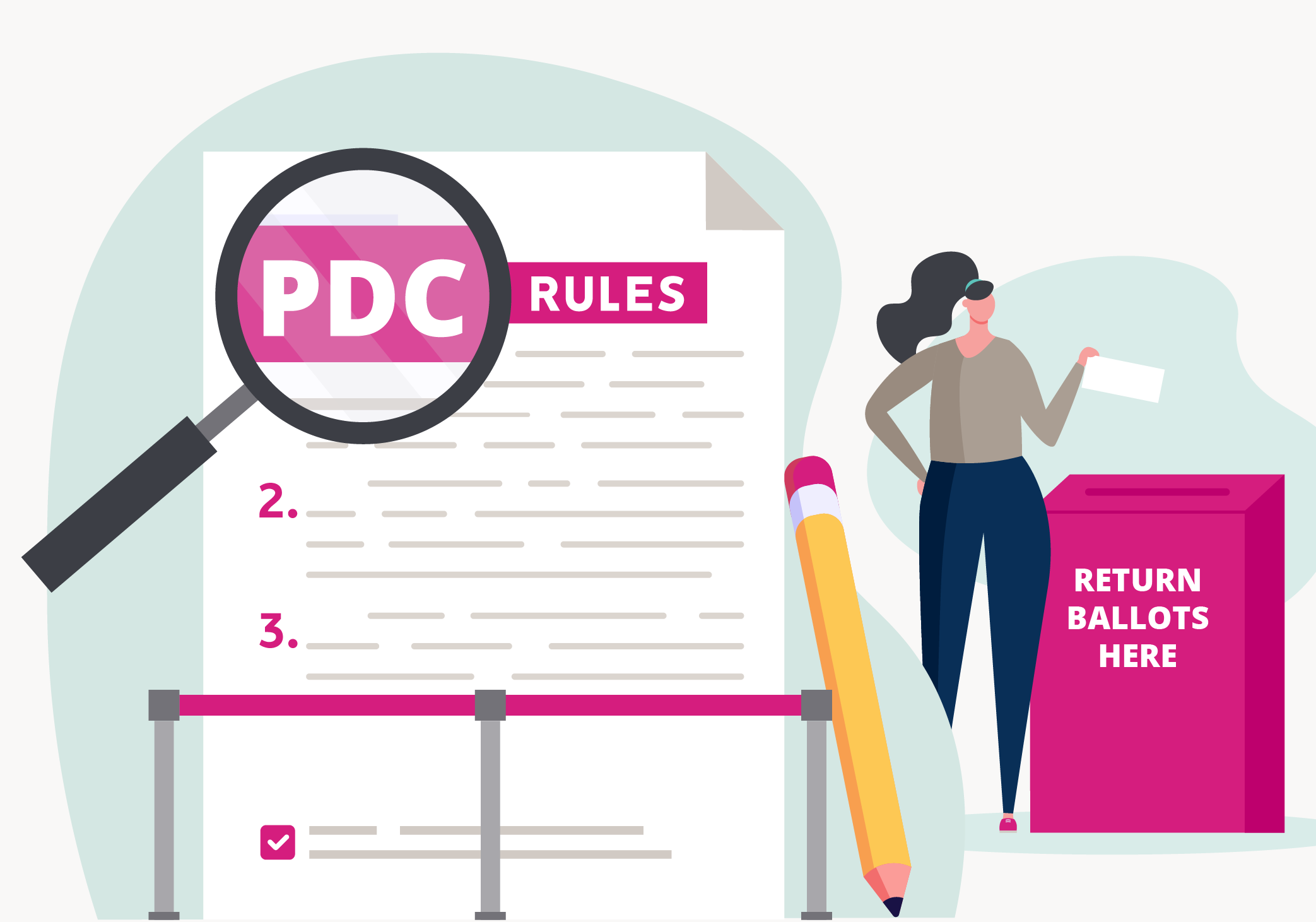The Public Disclosure Commission (PDC) is the Washington state body that regulates what districts are allowed to do when communicating about a school funding initiative. Their very lengthy guidelines can be found here. While they are absolutely the best source of information, those guidelines can also be very daunting to read through. We’ve created a quick overview of the rules here to help simplify things and focus on communications specifically. Just a note: This article should not be used as legal advice–it is safest to consult your district’s legal counsel when publishing communications around bond or levy initiatives.
In general, a school district may use its resources to:
…develop an objective and fair presentation of the facts regarding district needs and the anticipated impact of a ballot measure, and may distribute it in the district’s customary manner.
This means the district cannot use its resources (including contracting with us) to send messages with persuasive language about a ballot measure, nor can its employees campaign during work hours using district resources. If a district violates the PDC guidelines and a citizen files a complaint, the election can be invalidated, even if the violation may have had a minimal effect on the outcome.
As ESD communicators, we help guide our district clients so they understand the guidelines and help them communicate those guidelines to their staff as well. (Often district staff are aware of the rules, but school staff might get overzealous and break the rules without realizing it. It is important to share these rules with all school personnel.) These rules apply to districts and district activities. They do not apply to a citizens’ committee, which runs the “vote yes” campaign outside of the district’s information-sharing. They also do not apply to school personnel during off hours using their own resources (for example, a teacher can certainly encourage their friends on social media to “vote yes” or volunteer to be on the citizens’ committee, as long as these activities take place during non-work time using personal equipment and resources).
Below are some “rules of thumb” that we advise our clients with examples of what to do and not to do. This is not an exhaustive list, and working with communications professionals and legal counsel assures you are following proper requirements.
RULE 1: Communicate using your usual methods
If you don’t communicate regularly with your community, you need to! Voters should be familiar with the good work your district is doing well before a funding measure rolls around.
DO
Send a mailer with information about the details of the ballot measure to your community, timed to coincide with when voting booklets arrive in mailboxes.
DON'T
Send multiple mailings that are only about the ballot measure, if this is inconsistent with the district’s past practices.
DO
Mention the ballot measure in your regular communications (such as print newsletter, social media, website).
DON'T
Use methods of communication that are not typical for you (for example, take out newspaper ads if you don’t do that for other things).
DO
Establish social media accounts and send regular newsletters out to your community on a regular basis well in advance of any funding measure.
DON'T
Scramble to establish communications to the community after a funding measure has been voted on by your board.
RULE 2: Stick to the facts
Do not use language or imagery that could be seen as persuasive for a yes vote.
DO
Say: “Remember to vote!” or “Please vote by XX date!”
DON'T
Say: “Vote YES!” or “The kids are counting on you!”
DO
Say: “This levy supports school programs that are not fully funded by the state.”
DON'T
Say: “This levy is critical for kids to receive a proper education.”
DO
Say: “This bond will allow us to replace aging school buildings to address overcrowding and improve safety and security.”
DON'T
Say: “This bond is critical to replace school buildings that are completely unsafe for children and staff.”
DO
Use images of students (get explicit parent permission) in programs funded by levies, students in facilities affected by a bond, or photos of poor building conditions.
DON'T
Use highly emotional or “pro” images, such as kids giving a thumbs up or images of people with vote yes signs.
DO
Include easy-to-read and attractive charts and graphs to explain financial information.
DON'T
Try to conceal or obscure rate increases or amounts, if applicable. (It’s better to just address increases head-on.)
DO
Outline exactly what the funding measure will pay for. The more detailed, the better (within reason).
DON'T
Use vague statements about what the funding is for or overpromise.
To sum up, make sure that your communications around a school funding measure fit within the bounds of your typical communications to the community and that you provide only factual information, not highly emotional or persuasive content. Not sure where to start? We specialize in helping districts communicate factual information in a concise and professional way without overwhelming voters (and while staying PDC compliant).


